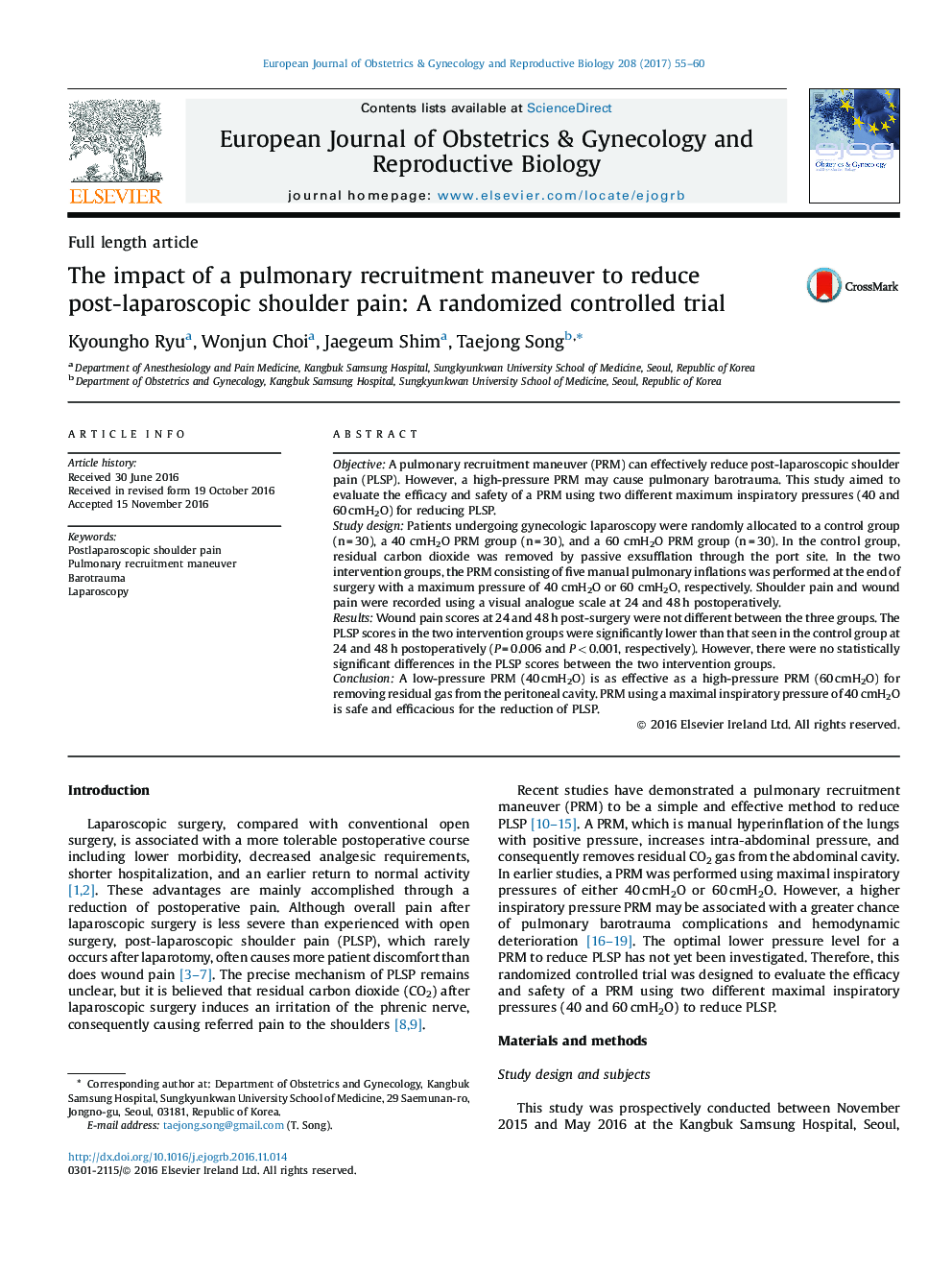| کد مقاله | کد نشریه | سال انتشار | مقاله انگلیسی | نسخه تمام متن |
|---|---|---|---|---|
| 5689606 | 1599773 | 2017 | 6 صفحه PDF | دانلود رایگان |
ObjectiveA pulmonary recruitment maneuver (PRM) can effectively reduce post-laparoscopic shoulder pain (PLSP). However, a high-pressure PRM may cause pulmonary barotrauma. This study aimed to evaluate the efficacy and safety of a PRM using two different maximum inspiratory pressures (40 and 60 cmH2O) for reducing PLSP.Study designPatients undergoing gynecologic laparoscopy were randomly allocated to a control group (n = 30), a 40 cmH2O PRM group (n = 30), and a 60 cmH2O PRM group (n = 30). In the control group, residual carbon dioxide was removed by passive exsufflation through the port site. In the two intervention groups, the PRM consisting of five manual pulmonary inflations was performed at the end of surgery with a maximum pressure of 40 cmH2O or 60 cmH2O, respectively. Shoulder pain and wound pain were recorded using a visual analogue scale at 24 and 48 h postoperatively.ResultsWound pain scores at 24 and 48 h post-surgery were not different between the three groups. The PLSP scores in the two intervention groups were significantly lower than that seen in the control group at 24 and 48 h postoperatively (P = 0.006 and P < 0.001, respectively). However, there were no statistically significant differences in the PLSP scores between the two intervention groups.ConclusionA low-pressure PRM (40 cmH2O) is as effective as a high-pressure PRM (60 cmH2O) for removing residual gas from the peritoneal cavity. PRM using a maximal inspiratory pressure of 40 cmH2O is safe and efficacious for the reduction of PLSP.
Journal: European Journal of Obstetrics & Gynecology and Reproductive Biology - Volume 208, January 2017, Pages 55-60
